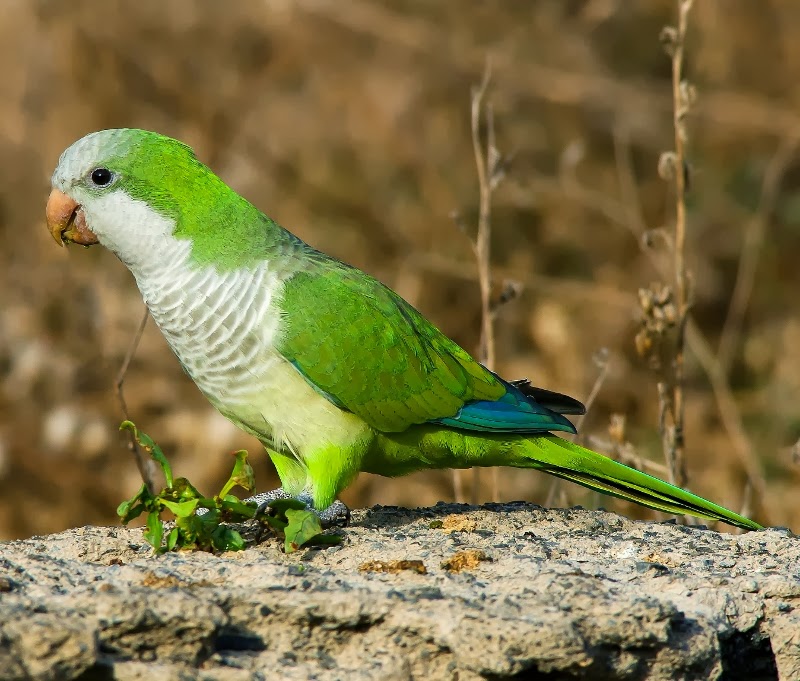 |
| Photo by Juan Emilio (Wikipedia) |
Common name:
monk parakeet (en); caturrita (pt); conure veuve (fr); cotorra argentina (es); mönchssittich (de)
Taxonomy:
Order Psittaciformes
Family Psittacidae
Range:
This species originates from southern Brazil, Bolivia, Paraguay, Uruguay and northern Argentina, but it has been introduced to several areas outside their native range, including several cities in the eastern United States, in Mexico, in the Caribbean, in southern Europe and in western Europe.
Size:
This birds are 28-33 cm long and have a wingspan of 45-50 cm. They weigh 80-120 g.
Habitat:
The monk parakeet is mostly found in open savannas and degraded tropical forests, but also tropical moist forests, palm groves, pastures, arable land, rural gardens and parks within urban areas. They are present from sea level up to an altitude of 1.000 m.
Diet:
They eat a wide variety of seeds, fruits, blossoms, buds and also some insects.
Breeding:
Monk parakeets breed in July-December. They build a stick nest on a tree or a man-made structure, sometimes breeding colonially with a single large nest with separate entrances for each pair. The female lays 5-11white eggs which are incubated by both parents for 25-31 days. The chicks fledge 6-7 weeks after hatching.
Conservation:
IUCN status – LC (Least Concern)
This species has a very large breeding range and is described as common. The population is suspected to be increasing as ongoing habitat degradation is creating new areas of suitable habitat.







